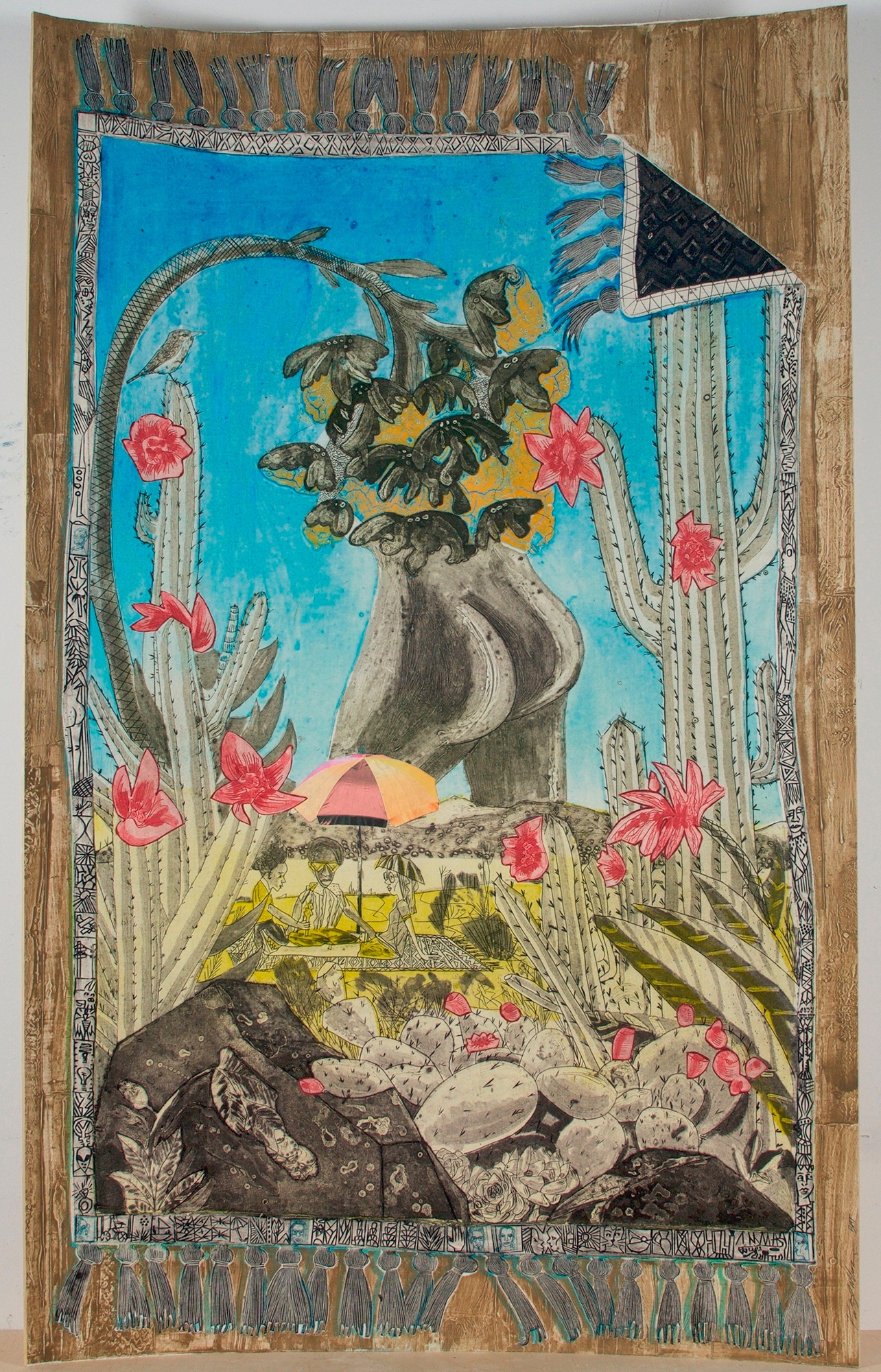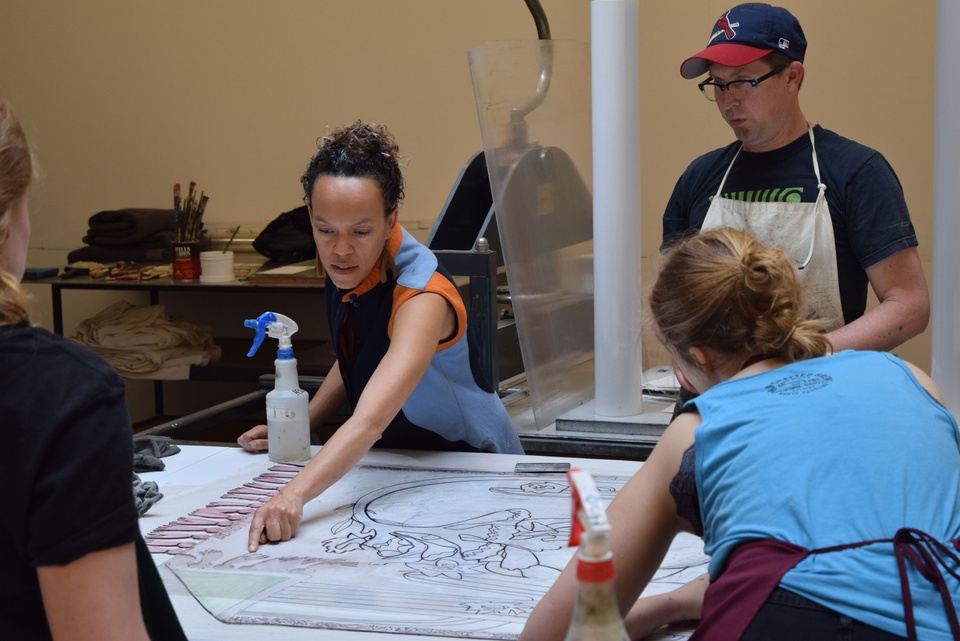Paula Wilson
In The Desert
Artist Paula Wilson worked in residence at Island Press in May of 2015 and created a series of works inspired by actual throw rugs she made. Wilson, who is a master of the collagraph process, worked between intaglio and relief on two giant plates, creating arrays of color with a la poupeé (where multiple colors of ink are wiped on the plate simultaneously). Printed on muslin and mounted to wood slats or hung like tapestries, the works are faux rugs that explore gender, race, and sexuality, using the human backside as symbol and canvas. In the Desert: Mooning is an editioned work that became the foundation for the rest of the series. Wilson worked with early proofs from the development of In the Desert: Mooning and created the rest of the series by collaging scraps of printed muslin.
PROOF essay by Stephanie Ellis Schlaifer, author, poet, and artist
In Paula Wilson’s work, everything is at play. Her subjects are mythic, reframed archetypes—they contain multitudes. Her project with Island Press comprises a series of collagraphs titled In the Desert: Mooning plus eleven unique works, many of them collaged from remnants of the edition proofs. In them, Wilson creates a parable in patternwork and glyphs, one which conflates ancient and 21st-century motifs. She works against convention and across media—printmaking, collage, video, installation—and is an incessant layerer. Her work resists the tidiness of categorization and its aloofness. Wilson’s layering questions the very frame of representation: take her work seriously, but don’t fence her in.
The Island Press edition explores gender, race, and sexuality, using the human backside as symbol and canvas. This gender-neutral form is a perennial trope in Wilson’s work. She humorously inverts the body, top to bottom, back to front. Asses become faces, and the subject of the gaze perpetrates the gaze. What looks back at us? Which us is us?
It’s fitting that this edition from Island Press is one of collagraphs. A hybrid process, collagraphy offers the layering possibilities of both intaglio and woodcutting, with the ability to collage plates together. Working with just two giant plates, Wilson creates an array of color, by inking in relief and a la poupeé (where multiple colors of ink are wiped simultaneously instead of rolled). The layering process mimics the represented textures—wooden floorboards (which Wilson freehanded) or the thorny chaparral.
Inspired by actual throw rugs Wilson made, the collagraphs are faux rugs, suffused with a dreamlike suspension of disbelief. Printed muslin becomes wood beneath tapestry, with tassels cheekily parted and corners peek-a-booed. But no matter how convincing the imitation may be, Wilson reminds us that this is not a rug. In the monoprint collage Tassel Rug, the tapestry is composed of nothing but tassels—the symbol becomes the substance. Sediment pieces together a kind of aerial map from printed fragments—stained glass is born from bright and jagged things.
Wilson is not so much the creator of these works but their omniscient narrator. These are images that speak. Frank, commanding, and sometimes, guffawing. In these prints, Wilson creates an origin myth, but the gods are made in our image. The Garden of Eden is the Luncheon on the Grass, which is a picnic in the sand. Anachronistic beach umbrellas shade the human figures from the blaze of the sun. Are the cacti prickly at the dawn of time? Even they erupt in blossom. Wilson offers us a rich tapestry. A celebration of liberation, of wildness. A questioning and inversion. Filled with idlers and idols, birds and booties. All of it, laying at your feet.




















